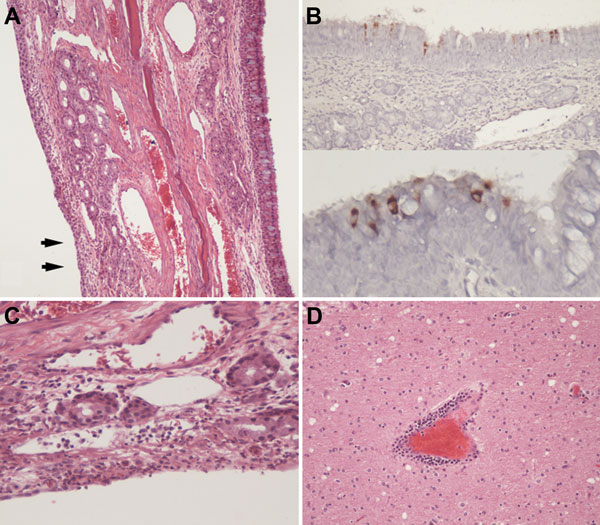Volume 22, Number 6—June 2016
Research
Infection, Replication, and Transmission of Middle East Respiratory Syndrome Coronavirus in Alpacas
Figure 4

Figure 4. Signs of mild upper respiratory inflammation, encephalitis, and virus antigen detection in respiratory epithelium of alpacas experimentally infected with Middle East respiratory syndrome coronavirus. A) Turbinate from alpaca A8 showing normal respiratory epithelium on the right with goblet cells (blue cells). Epithelium on the left has undergone squamous metaplasia (arrows) and is focally eroded with mild subepithelial inflammation (original magnification ×100). B) Virus antigen in apparently intact respiratory epithelium of alpaca A8 detected by immunohistochemical analysis and lack of subepithelial inflammation (original magnification ×200 [top] and ×400 [bottom]). C) Erosion in turbinate epithelium from alpaca A8 showing leukocytosis in underlying blood vessels (original magnification ×400). D) Perivascular infiltration of lymphocytes and monocytes in the brain of alpaca A9 (original magnification ×200). Hematoxylin and eosin stain in panels A, B, and D; immunohistochemical stain in panel C.